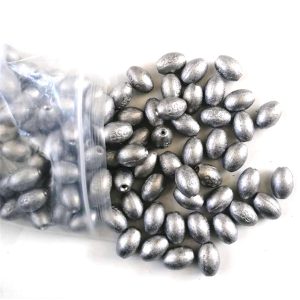When it comes to fishing, selecting the right tackle can make a significant difference in your success. Among the variety of sinkers available, egg sinkers are a versatile choice that many anglers swear by. Understanding when and how to use egg sinkers can help you improve your fishing technique, especially as seasonal trends shift.
Understanding Egg Sinkers
Egg sinkers are small, oval-shaped pieces of lead with a hole through the middle, designed to allow your fishing line to pass through freely. Their unique shape allows them to glide easily through water, making them ideal for various fishing conditions. The versatility of egg sinkers makes them a popular choice among both novice and experienced anglers, especially when targeting species that require a more subtle approach.
When to Use Egg Sinkers
- Fishing in Currents Egg sinkers are particularly useful when fishing in areas with strong currents. Their shape helps them stay anchored to the bottom while allowing the bait to move naturally. This is especially important when fishing in rivers or tidal waters where the current can drag your bait out of the strike zone. During the fall season, when many fish species like bass and catfish are more active in moving waters, egg sinkers can help you maintain control over your bait’s position.
- Bottom Fishing If you’re targeting bottom-dwelling species like catfish, redfish, or flounder, egg sinkers are an excellent choice. The sinker’s shape allows it to settle on the bottom without getting snagged easily, which is crucial when fishing over rocky or uneven surfaces. In the fall, as fish begin to prepare for winter by feeding heavily on the bottom, egg sinkers can help present your bait precisely where these fish are hunting.
- Live Bait Fishing When using live bait, you want the bait to move as naturally as possible to entice fish. Egg sinkers are ideal for this because they allow the bait to swim freely while keeping it near the bottom where many predator fish feed. During the fall, live bait fishing can be particularly effective, as fish are often more aggressive and willing to chase down a moving target.
- Long Casts The aerodynamic shape of egg sinkers makes them perfect for long-distance casting. Whether you’re surf fishing or casting from a boat, egg sinkers help you reach distant targets without compromising the bait’s presentation. In the fall, when fish might be spread out and moving towards deeper waters, the ability to cast long distances can be crucial to your success.

How to Rig an Egg Sinker
Rigging an egg sinker is straightforward, making it accessible for anglers of all skill levels. The most common method is the slip-sinker rig, which involves threading the fishing line through the sinker and tying it to a swivel. A leader line is then attached to the swivel with the baited hook at the end. This setup allows the sinker to slide freely on the line, giving the fish minimal resistance when it takes the bait. This is particularly useful when targeting species that are sensitive to tension on the line.
Choosing the Right Size
The size of the egg sinker you choose depends on several factors, including the strength of the current, the depth of the water, and the size of the bait. Lighter sinkers are suitable for calm waters and shallow depths, while heavier sinkers are needed for deeper waters or stronger currents. During the fall, when currents can become more unpredictable, having a range of egg sinker sizes in your tackle box ensures you can adapt to changing conditions.
Egg sinkers are an essential tool for any angler, offering versatility and effectiveness in various fishing scenarios. Whether you’re bottom fishing in a river or casting long distances in the surf, knowing when and how to use egg sinkers can significantly improve your chances of success. As the fall fishing season approaches, be sure to include egg sinkers in your gear to capitalize on the feeding habits of your target species. Their ability to keep your bait in the strike zone, while allowing for natural movement, makes them a go-to choice for many anglers.
Image: fidesfishing





